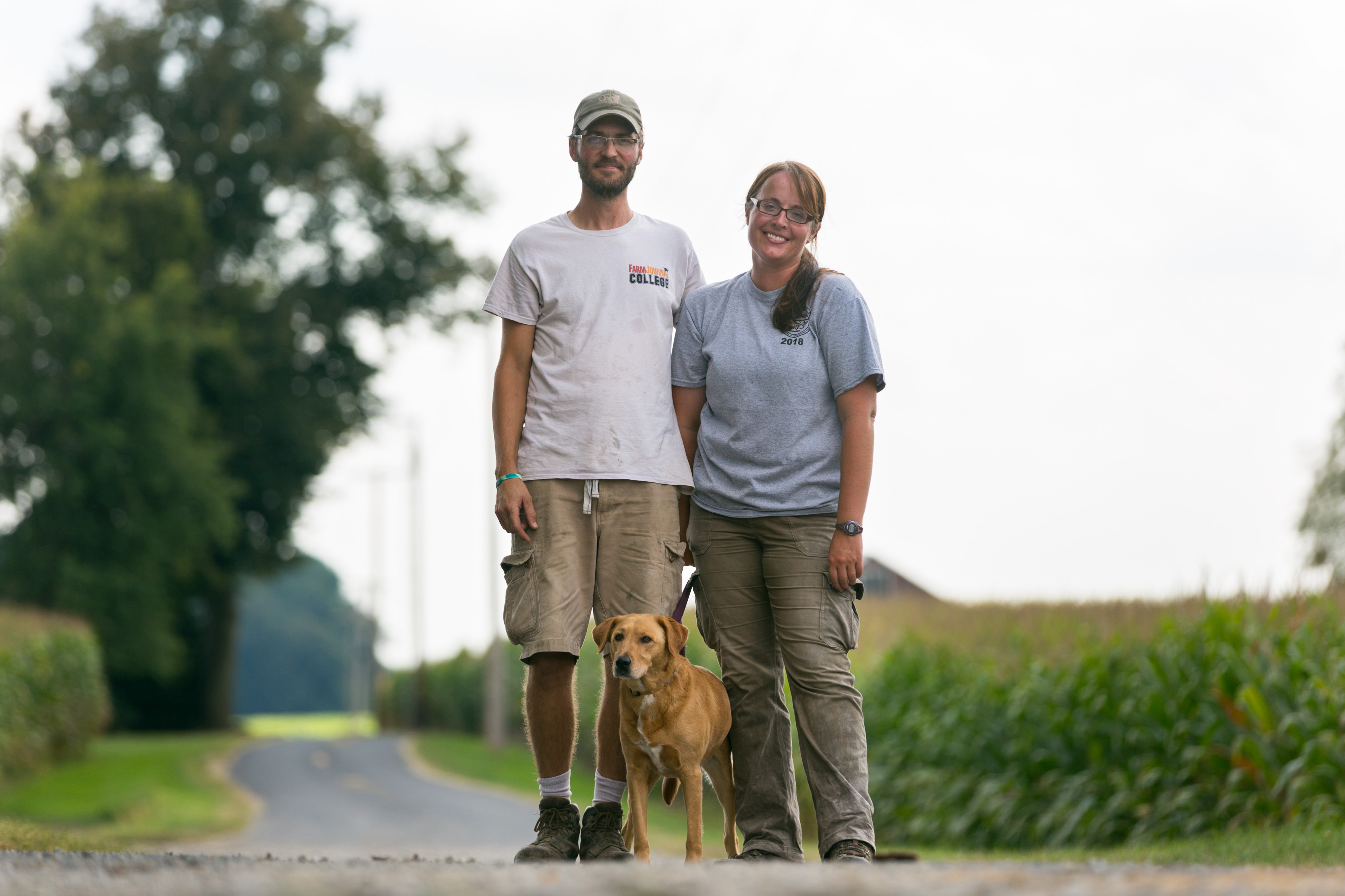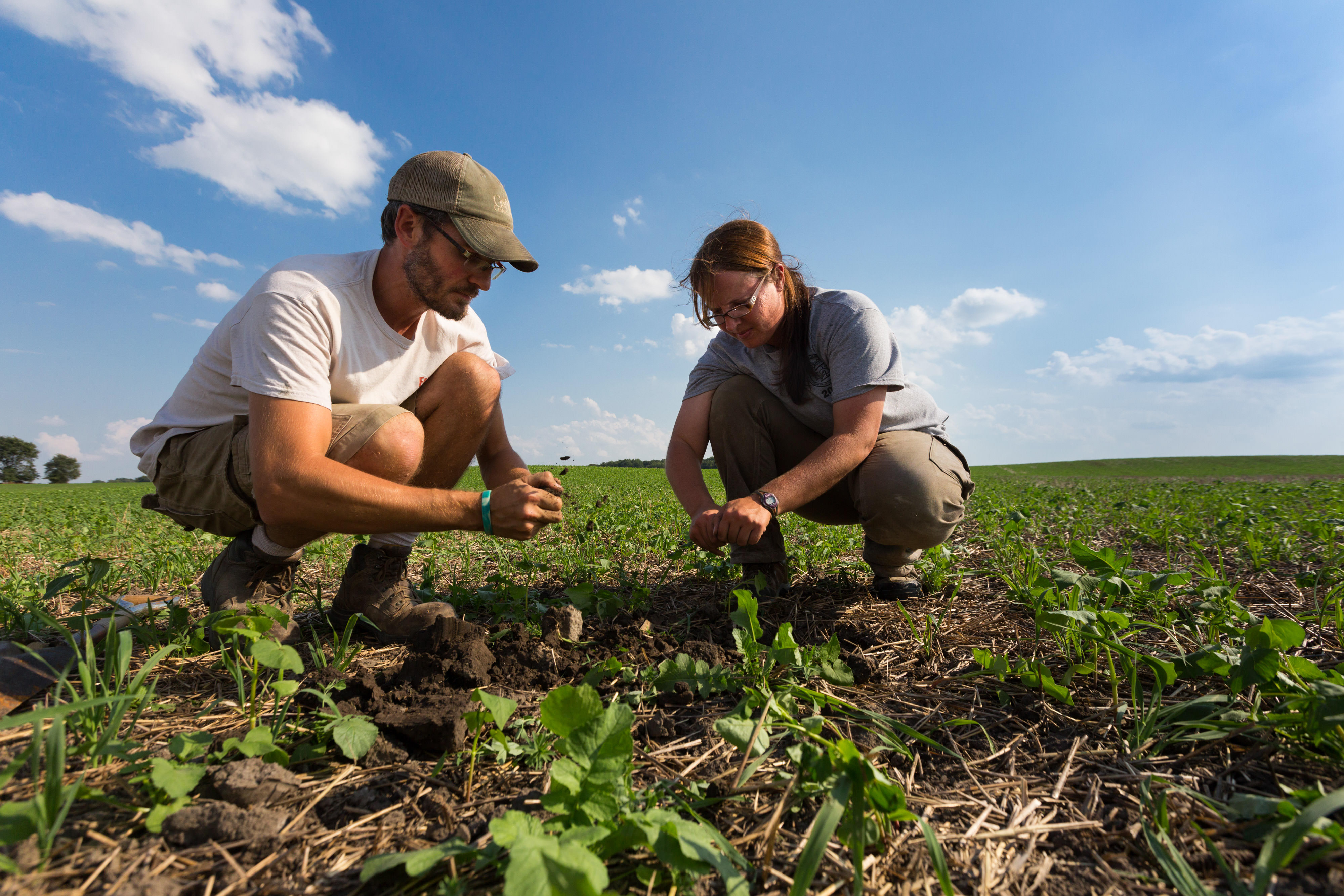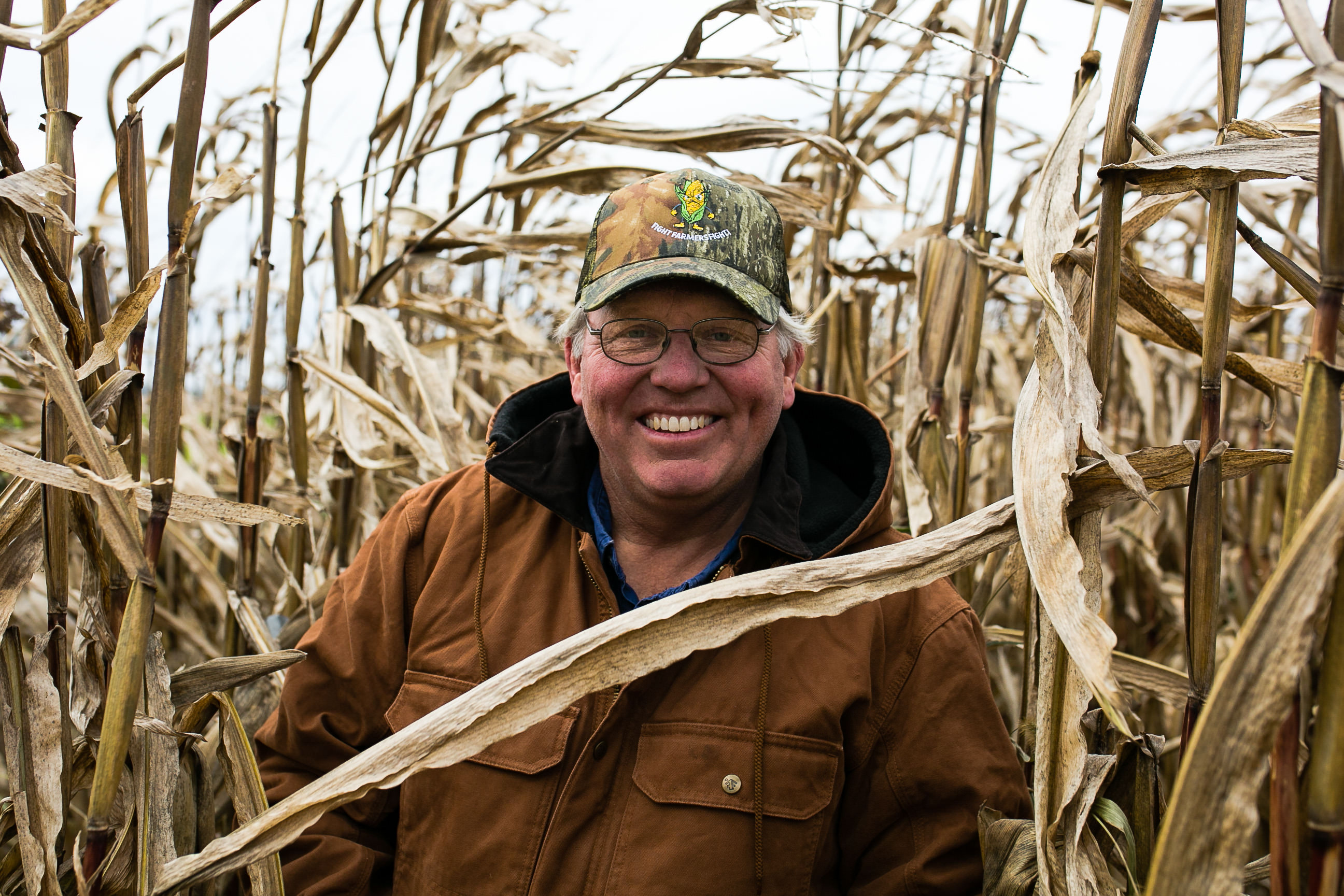Farmers at the Forefront of Soil Health
See how other farmers are building a sustainable future on their lands.
See Their StoriesIt’s a sunny late summer day in rural DeKalb County in northeast Indiana, about 25 miles north of Fort Wayne. For miles around, fields of tall, dark green corn crops are gently swaying in the warm breeze. The scent of growing corn—a lush, slightly sweet plant smell—drifts in the air.
Sarah Delbecq’s family has been farming here for six generations, all the way back to 1864. She grew up here, then went away to school and gained an education in agricultural economics. She worked for the U.S. Department of Agriculture’s Economic Research Service and as an economist in the Bureau of Economic Analysis in Washington, D.C. “I don’t think when I was a kid growing up here I ever imagined myself being a farmer, but now I’m glad I am,” she says.
She and her husband Benoit have been back at her family farm for five years. “I think the reason we came back to this farm was that it’s important to us,” she says. “It’s important to my family history but also important to both of us to have careers in agriculture. We both studied that in school, and agriculture matters to us. We enjoy it. It’s a way of life unlike any other.”
Quote: Sarah Delbecq
As my dad says, you just dig up the ground, and then you’ll see the number of earthworms that there are. That’s a very good sign the soil is healthy and productive."
Balancing Economics and Conservation
Sarah and Benoit farm about 2,400 acres at Brechbill Farms, growing corn, soybeans and some winter wheat. Protecting the environment is important to them, but so is making a living. They are full-time farmers, and this is not a hobby. “We want to leave the land in better shape than what we found it,” she adds. “But we also need to let the farm continue to function as a profitable, working farm. Our biggest challenge is to be a farm that remains in existence.”
Sarah learned about caring for the land and protecting soil health from her father, Phil Brechbill. He began a system of no-till planting across the farm in the late 1980s. No-till is planting without plowing and turning over the soil. “I think my dad quickly recognized it’s a system you have to fully buy into,” she says. “You don’t no-till one year and then not no-till and then come back to it. He was able to commit to it, and we’ve been able to carry that on.”
Originally, Sarah’s father tried no-till to reduce his labor costs. But after 30 years of consistent no-till, she says, “the soil structure’s better…. And as my dad says, you just dig up the ground, and then you’ll see the number of earthworms that there are. That’s a very good sign the soil is healthy and productive.”
Building on the foundation that Sarah’s father laid with no-till, Sarah and Benoit have added cover cropping and nutrient management to their conservation practices. Cover cropping is planting noncash crops in the off-seasons to reduce erosion and return nutrients and moisture to the soil. Nutrient management is controlling how fertilizers like nitrogen and phosphorus are applied to prevent excess getting into waterways and affecting water supplies.
Currently, the Delbecqs are planting a cover crop mix of oats, radishes, buckwheat, flax, crimson clover and Austrian winter peas on about 400 acres of wheat and cornfields, experimenting from year to year with the seed mixes and crop fields to see what works best for them. “We saw cover crops as something that could complement the no-till system—that those two conservation practices kind of fit together,” she says.
They are also following the 4Rs of nutrient management—applying their fertilizers from the right source at the right rate, right time and right place. “In coming back to the farm and learning this profession, learning when to apply nitrogen for corn has been the biggest eye-opener for us. You can put all the nitrogen on early, but the reality is the corn doesn’t need it until it gets to a certain growth stage. Speaking for myself, it was a very natural extension for us to say: Agronomically, let’s not put nitrogen in the cornfields before the plants need it, but also environmentally if the nitrogen is not needed then for the crop and could just wash away, we don’t want it to go into our local waters.”


Representing Local Farmers
Since Sarah has returned to the family farm, she has also made a commitment to combine her experience as a farmer and as an agricultural economist to help represent fellow Indiana farmers in local organizations. She is currently president of the Indiana Corn Growers Association, a membership organization that represents grower concerns at local, regional and national levels.
She also serves as a director on the Indiana Corn Marketing Council, which is the Indiana corn farmers’ marketing arm. It’s a checkoff program that is funded by a small percentage from each farmer’s sale of corn. “One big job of the Corn Marketing Council is finding new markets, new uses, and protecting current markets for corn,” she explains. “Working in these organizations, those are the kinds of things that benefit all farmers. I see it as something that’s for the public good.”
“Sarah and her family are leaders in Indiana agriculture, no question,” says Mike Dunn, director of freshwater conservation for The Nature Conservancy in Indiana. “They are leading through their example, showing Indiana farmers how they can benefit from conservation practices like no-till and cover cropping. And with her leadership in Indiana farmer organizations she is helping to set the agenda for and representing practices that make good sense across the Grain Belt.”
Sarah and Benoit are committed to keeping conservation practices as central to their farm management, despite the balancing act they sometimes have to do to make ends meet financially. “We want to be good stewards,” she says. “The practices on our farm clearly affect our farm. But they also affect things off the farm, and we know what we do will impact others downstream, others who share this environment. We want to be as good stewards as we possibly can of what’s been entrusted to us.”



